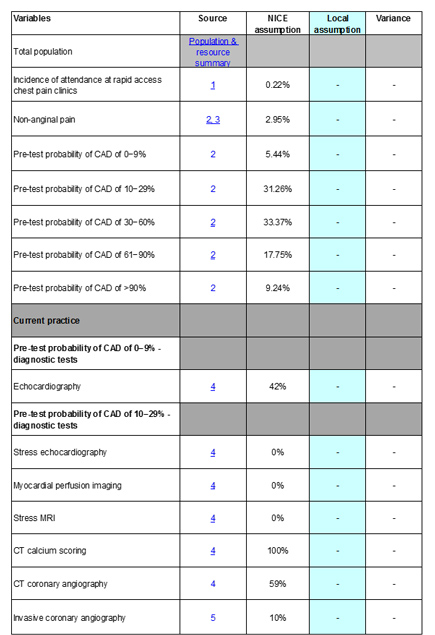We estimate the costs or savings (resource impact) associated with technologies and guidelines so you can plan for and implement guidance.
Resource impact also covers wider issues such as:
- capacity and demand
- changes to patient flows
- workforce
- training implications
- facilities.
How we assess the resource impact of guidance
Our processes and methods manual describes how we estimate the resource impact of NICE guidance. This ensures the assessments meet users' needs.
The manual covers:
- NICE guidelines
- technology appraisals
- highly specialised technologies
- medical technologies
- diagnostic technologies.
It also provides information to help people understand the resource impact team's role, outputs and ways of working.
Assessing resource impact process manual (Word)
The manual was updated in February 2023 to clarify that the budget impact tests RIA complete are undertaken by comparing the ‘world with’ and the ‘world without’ the technology for all assessments. The manual should be read in conjunction with the budget impact test for technology appraisals and highly specialised technologies.
Plan for the impact of guidance
If you plan for and implement NICE guidance, our resource planner (Excel) will help you by:
- listing upcoming guidance with indicative costs or savings for England
- summarising the resource implications of published guidance
- providing links to our support tools.
The latest edition was published on Wednesday 06 September 2023. The next edition will publish on Wednesday 04 October 2023.
Stay up to date
- Subscribe to our monthly email digest to get links to the latest resource planner, reports and templates sent to you every month.
- Join over 100 professionals in our LinkedIn group and see our new reports and templates as they publish.
Tools to help you implement guidance
We produce reports, templates and statements alongside our guidance. They detail the potential impact of guidance on your finances and other resources (workforce, capacity and demand, infrastructure and training and education).
You can find the tools through the 'tools and resources' tabs on individual guidance and standards pages.
Reports, templates and statements are removed after a period of time (usually 4 years). This is to ensure the information we share with you is up to date. If you are looking for something that may have been removed, contact us at resourceimpactassessment@nice.org.uk and we’ll be happy to help.
Resource impact reports
These Word documents use national estimates to summarise the expected resource impact of the guidance. Any assumptions are fully explained in the document.
If national estimates are not possible, or if there is likely to be local variation, the report highlights areas for you to consider at a local level.
Reports are supported by resource impact templates.
Resource impact templates
These Excel spreadsheets enable you to get a more accurate estimate of the local resource impact of guidance.
We produce templates when the resource impact is expected to be significant (greater than £5 million for England).
If costs cannot be quantified, the template identifies major cost drivers for you to consider at a local level.
Templates are based on the population of England but can be amended to estimate the impact for Wales, Northern Ireland and local commissioning organisations.
Resource impact statements
Statements are provided if costs and savings are not considered to be significant (less than £5 million for England).
An example of the resource impact template for CG95

More information
Learn about resource impact assessment
Come along to our free learning events to:
- understand the resource impact assessment tools available
- hear from NICE speakers about guidance development and health economics
- speak to colleagues about how commissioners and service providers can work together to implement NICE guidance.
We'll publish dates for future events as soon as possible. Please check this page for updates or email resourceimpactassesment@nice.org.uk for more information.
Help to develop our resource impact tools
To check our tools are fit for purpose we get them checked by an independent panel - the Adoption and Impact Reference Panel.
Join the panel to give your expert advice on tools and resources developed to support NICE guidance.
Planning for the future, a resource impact case study
We talk to Mohammed Asghar, prescribing governance lead at Frimley Health and Care Integrated Care System and Carolyn Craven, prescribing support pharmacist at Cheshire and Merseyside Health and Care Partnership. Mohammed and Carolyn discuss our resource planning tools. They explain how they use them to help their local health and care system prepare, assessing the local impact of putting our guidance into practice.
Read our resource impact case study
Send us your feedback
If you have any questions or comments, email us at resourceimpactassessment@nice.org.uk
Save money with NICE guidance
We've identified NICE guidance that could generate cost savings.